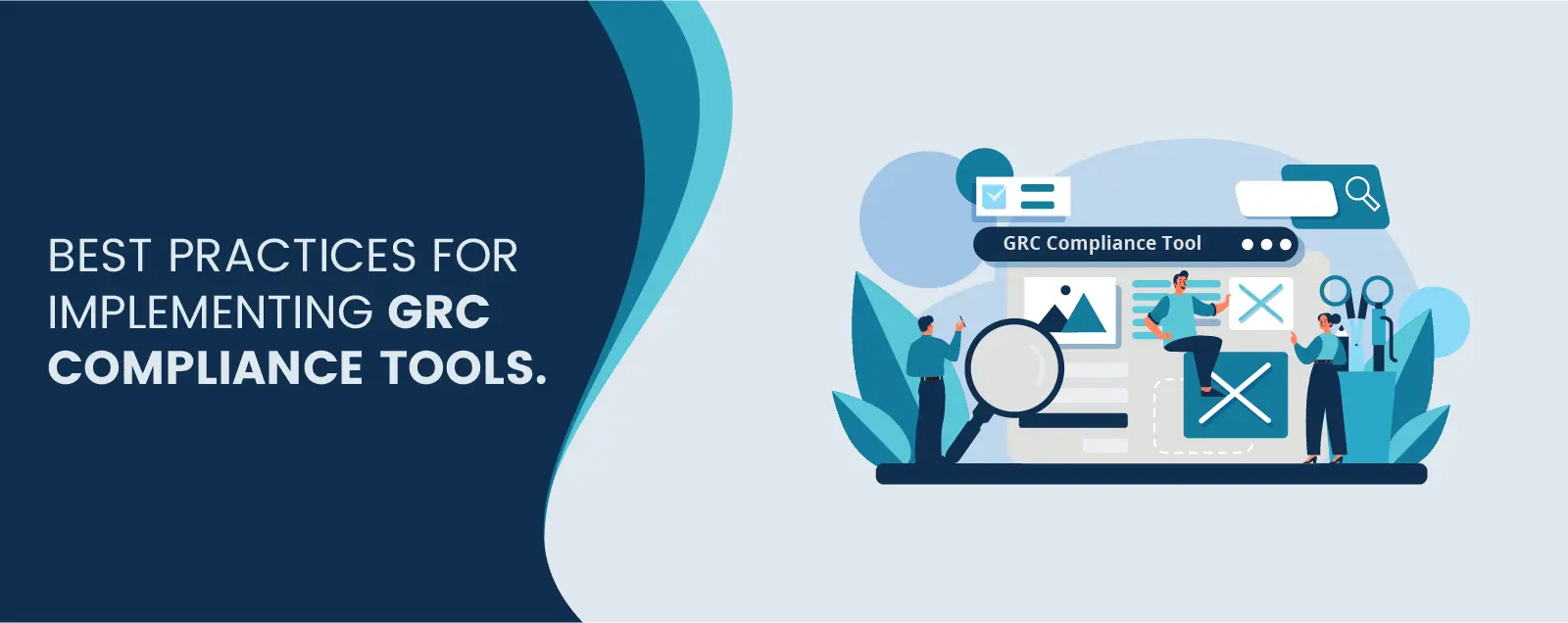Governance, risk, and compliance (GRC) are key components of the operations of every firm. Companies must adhere to legislation, standards, and internal policies. GRC implementation, on the other hand, can be complicated and resource-intensive. GRC compliance solutions are software systems that are meant to assist these processes and procedures by automating risk, compliance, and governance management.
This article will go through the best practices for adopting GRC compliance tools . We will discuss who needs these tools, why they are necessary when they should be implemented, where they are utilized, and how they should be implemented.
Who Needs GRC Compliance Tools?
GRC compliance tools may help any firm that has to comply with rules or industry standards. GRC compliance solutions are especially crucial for highly regulated industries like banking, healthcare, and government, as well as firms that manage sensitive data or face cybersecurity risks.

Why are GRC Compliance Tools Essential?
GRC compliance solutions are essential for a variety of reasons. For starters, they assist firms in achieving and maintaining regulatory and standard compliance. Failing to meet these obligations may result in penalties, legal action, reputational harm, and loss of consumer confidence. GRC compliance technologies may also promote operational efficiency, lower costs, and improve openness and accountability.
When Should GRC Compliance Tools Be Implemented?
GRC compliance technologies should be introduced as early in an organization’s lifecycle as practicable. This involves both the planning and design stages, as well as the organization’s operation and upkeep. To maintain continuing compliance, it is critical to regularly monitor and analyze the performance of GRC compliance tools and make any required modifications.

Where are GRC Compliance Tools Used?
GRC compliance solutions are employed in a number of contexts, including big and small enterprises, as well as in a wide range of industries and sectors. They are frequently interconnected with other software development programs and systems, including ERP and CRM systems.
How are GRC Compliance Tools Implemented?
GRC compliance tool implementation necessitates a comprehensive strategy involving numerous stakeholders and departments. Some recommended practices for adopting GRC compliance tools are as follows:
Perform a GRC Assessment
It is critical to examine the organization’s present GRC processes and procedures before deploying GRC compliance solutions. This evaluation should uncover compliance gaps, areas of risk, and areas for improvement. The review should be thorough, including an examination of policies, processes, controls, and technology.

Establish GRC Policies and Procedures
After holes have been discovered, GRC policies and procedures must be developed and documented. They should be adapted to the organization’s unique demands and should adhere to applicable legislation and industry standards. To ensure that GRC policies and procedures remain current and effective, they should be evaluated and updated on a regular basis.
Choose The Best GRC Compliance Tools
Choosing the correct GRC compliance tools is important to the implementation’s success. While considering prospective solutions, consider elements such as functionality, simplicity of use, scalability, and pricing. It is critical to choose a tool that matches the organization’s unique demands and can adapt to changes in rules and industry standards.
Connect GRC Compliance Tools To Other Systems
GRC compliance solutions should be integrated with the organization’s other systems and applications. ERP and CRM systems, as well as other compliance-related software programs, fall under this category. Integration has the potential to increase efficiency, decrease duplication of work, and improve data accuracy.
Staff and Stakeholders Should be Trained
Educating employees and stakeholders on how to utilize GRC compliance technologies is key to their successful adoption. Ensure that training is targeted to the individual’s needs and that it covers both technical and non-technical elements of the tools.
Delegate Duties And Responsibilities
It is critical to provide defined roles and duties to individuals and departments in order to effectively utilize GRC compliance solutions. This involves appointing a GRC coordinator or manager to supervise the tool’s deployment and continuing administration. Each department should have a designated person in charge of ensuring that all applicable regulations and standards are followed.
Monitor And Assess The Efficacy
It is critical to constantly monitor and assess the performance of GRC compliance solutions. This involves tracking compliance data, identifying areas of risk, and making required adjustments to rules, processes, and controls. Frequent evaluations can help uncover compliance gaps and areas for improvement.
Consider Culture And Behavior
Using GRC compliance tools necessitates consideration of business culture and behavior. This involves fostering a compliance and accountability culture, encouraging workers to report noncompliance or possible risk, and ensuring that staff understands the necessity of compliance.
Conclusion
GRC compliance tools are essential for successful risk, compliance, and governance management. Using these technologies necessitates a systematic strategy involving several stakeholders and departments.
Organizations may successfully adopt GRC compliance solutions and guarantee continuing compliance with rules and standards by following these best practices. This can lead to enhanced operational efficiency, lower costs, and greater openness and responsibility.
